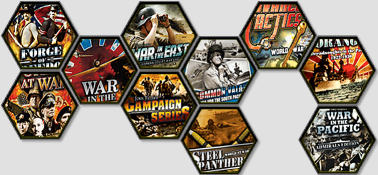Huib
Posts: 585
Joined: 11/21/2006
From: Nederland
Status: offline

|
quote:
ORIGINAL: simovitch
quote:
ORIGINAL: willy g
...I am starting to agree that the effectiveness against tanks is way to good for artillery's standards, however, I have not been able to find any documentation with any quantitative data about tanks lost to artillery fire.
Bob McNamara, Producer and lead researcher for EFII dedicated 2 pages to the manual justifying his decision to minimize tank casualties from HE shell in CS. He displays a declassified document showing how causes of mechanical damage (tank is taken out of combat) from battle is distributed for different types of Allied tanks hit by different types of German shot.
The document showed that 3% of the casualties were from combined direct and indirect HE shot (so casualties from indirect alone were less than 3%.)
The study was taken in the last months of WWII which leads me to believe that the losses were heavily weighted toward AT guns and 'fausts. I would vote for slightly more frequent disabled results than EFII, but definitely less than what I'm hearing about in 1.03.
Would also be interesting to see that for German tanks and Allied artillery.
These were the figures I read when I made the scenarios around Hamich in Charles MacDonalds Siegfried Line Campaign page 424:
Though CCB had taken its four objectives in less than three days, the results would stand as a monument to the celerity with which an enemy endowed with advantages in observation and assisted by nature can seriously cripple an armored force. The armored infantry had incurred losses of about 50 percent. Of 64 medium tanks at the start of the attack, all but 22 had been eliminated. Including 7 light tanks, total tank losses were 49. Panzerfausts had claimed 6; mistaken U.S. bombing, I; artillery fire, 6; mine fields, 12; and antitank fire, 24. These did not look much like statistics of a breakthrough operation.
Huib
< Message edited by Huib -- 7/15/2008 4:28:36 PM >
|
 Printable Version
Printable Version













 New Messages
New Messages No New Messages
No New Messages Hot Topic w/ New Messages
Hot Topic w/ New Messages Hot Topic w/o New Messages
Hot Topic w/o New Messages Locked w/ New Messages
Locked w/ New Messages Locked w/o New Messages
Locked w/o New Messages Post New Thread
Post New Thread